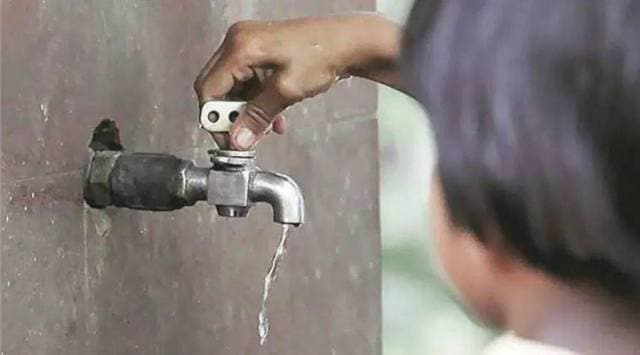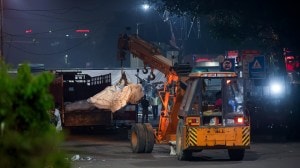Presence of dissolved solids exceeds drinking water limit near landfills in Delhi: Analysis
The Delhi Pollution Control Committee’s (DPCC) analysis reports are based on samples drawn in December last year from areas around the Ghazipur, Bawana, Okhla and Bhalswa landfills.
 The government has instructed the municipal administration and Urban Development department to ensure Aadhaar authentication and installation of automated water meters in households (Representational)
The government has instructed the municipal administration and Urban Development department to ensure Aadhaar authentication and installation of automated water meters in households (Representational)Groundwater analysis reports from areas near Delhi’s landfill sites show the presence of dissolved solids and sulphates far in excess of the limit desirable for drinking water.
The Delhi Pollution Control Committee’s (DPCC) analysis reports are based on samples drawn in December last year from areas around the Ghazipur, Bawana, Okhla and Bhalswa landfills.
At the Ghazipur landfill site, sample drawn from near the entry gate recorded total dissolved solids (TDS) of 1,860 mg/litre, more than three times the drinking water’s desirable limit of 500 mg/litre. Near the fish market there, the TDS level was even higher, at 2,170 mg/litre. The hardness of water, which is marked by the presence of calcium carbonate, was also high at Ghazipur. While at the fish market, the hardness of water was 860 mg/litre, well above the 300 mg/litre prescribed for drinking water. Similarly, at the Ghazipur dairy, the hardness was 710 mg/litre.
The sulphate level at Ghazipur was also high — 490 mg/litre at the dairy farm and 385 mg/litre near the entry gate. The permissible limit for sulphate in drinking water is 200 mg/litre.
The high concentration of sulphate in samples indicates the effects of industrial and anthropogenic activities in the area, according to a report on aquifer mapping and groundwater management in Delhi by the Central Ground Water Board in 2016.
At Bhalswa, the sample drawn from the Bhalswa dairy recorded a TDS level of 2,160 mg/litre, while the concentration of sulphate was 785 mg/litre, both in excess of the desirable limits. Similarly, at ESI Hospital, Okhla, the TDS level was 1,060 mg/litre, and the hardness was as high as 1,400 mg/litre. At Bawana, the TDS level at the landfill was within the desirable limits for drinking water, but was well above the limit at Sector 5, Bawana village and Sanoth village. At Sanoth village, the sulphate concentration was 884 mg/litre, more than four times the permissible limit.
Shashank Shekhar, professor, Department of Geology, Delhi University, said sulphates in water usually come from organic waste, which is present at landfills. The hardness of water could be either due to waste or the sediments present at the site, he said.
“The landfills have not been scientifically planned, and there are high chances of leachate percolating into groundwater. This is quite expected of landfill sites, but the extent of pollution needs to be determined. Trace elements and heavy metals should also be analysed to determine the true impact on human health. Whether the dissolved solids contain carcinogens nobody knows, unless the presence of trace elements and heavy metals like lead, mercury, arsenic, cadmium is analysed,” he said.
The DPCC’s analysis of groundwater near landfill sites from March last year tested for the presence of zinc, iron, lead, copper, chromium and cadmium.
Zinc and iron were found from samples at all landfill sites, while the other metals were not detected. “While iron might come from sediments in the soil, it is rare that zinc might come from sediments,” Prof Shekhar added.







